You can animate most fur attributes to achieve special effects. For example, you can animate fur length so that fur appears
to grow, or you can animate fur inclination so that a character’s fur stands on end.
is one fur attribute that cannot be animated. However, animating will give the same effect as animating .
Animate fur attributes by keying the changes you make to the attributes. The following procedure describes just one way of
keyframing. For other methods, refer to Animation in Maya in the Animation guide.
To key fur attributes
- Attach a fur description to the surface. For details, see Create fur.
- Turn on by clicking
 at the bottom-right corner of the Maya main window and move to the first frame. For other methods, refer to Animation in Maya in the Animation guide.
at the bottom-right corner of the Maya main window and move to the first frame. For other methods, refer to Animation in Maya in the Animation guide.
- Do one of the following:
- Select the fur feedback and in the section of the , select the appropriate fur description.
- Select Fur > Edit Fur Description > to open the .
- Select the attribute you want to animate, right-click it and select one of the following:
- If you are in the , select .
- If you are in the , select .
- Move to another frame and edit the fur description attributes. For details, see Change fur attributes.
- Repeat step 6 as required.
- Click the
 button to check that the attributes are behaving the way you want them to.
button to check that the attributes are behaving the way you want them to.
- Render the animation. See Render an animation with fur.
Make fur grow
The following example illustrates how you can animate fur attributes by keyframing them. In this example, length is animated
to produce the effect of grass growing. (Notice that Maya Fur can also be used for non-fur effects, like grass or wheat.)
To play the animation, click the link below.
growAnim.mov
To animate grass growing
- Create a plane and add lights to the scene.
- Add a texture to the plane to make it look like earth.
- Attach a fur description to the surface and name it. For details, see Create fur.
- Set the fur attributes in the (Fur > Edit Fur Description > ).
- Map a texture to the fur base and tip color to make it look more realistic. Try green marble for grass. For details, see Map fur attribute values.
- Add . Try a value of 0.3.
- Map a texture or file to the attribute. In this example, the following file texture was used:
- Bake the attribute.
The surface remains bald (no grass will grow) where the map is black (value of 0). For details, see Map fur attribute values.
- Turn on by clicking
 at the bottom-right corner of the Maya main window and move to the first frame.
at the bottom-right corner of the Maya main window and move to the first frame.
- Set the fur to 0.
- In the , right-click the field and select .
- Move to the last frame and make the fur longer. Try a of 4.
- Click the
 button to check that the attributes are behaving the way you want them to.
button to check that the attributes are behaving the way you want them to.
- Render the animation. For details, see Render an animation with fur.
Make fur spread using animated file textures
The following example illustrates how you can animate fur attributes by mapping animated file textures to them. In this example,
baldness is animated to produce the effect of fur sprouting and spreading across a character, like a werewolf.
To play the animation, click the link below.
spreadFur.mov
To paint a series of textures
- Switch to the panel and select
- Change the size of the canvas to 256 x 256.
- Select .
- Set both the andto 256 and click , and then click .
- Set the canvas color to black if you want the value of the mapped attribute to be 0, or to white so the value is 1.
- Either leave the canvas black for the first file texture or paint a little bit. Then save the first texture in the sequence:
- Select .
- Go to the textures directory.
- Type a filename with a frame number, such as, spreadFur.1.iff, and click Save.
- Paint the canvas a little more and then save the next texture in the sequence.
- Repeat step 5 until you’ve finished creating all the sequences for the animated file texture.
To animate fur spreading across a character like a werewolf
- Create a plane and add lights to the scene.
- Add a texture to the plane to make it look like skin.
- Attach a fur description to the surface and name it. For details, see Create fur.
- Apply the fur preset to the (Fur > Edit Fur Description > ).
- Click the button in the , select and then select replace.
- Map an animated file texture to the attribute:
- Right-click and select. For details, see Apply animated file textures to objects.
- Select from the window.
- Make sure you are at frame 1.
- In the file node, click the folder button to browse for the following animated file texture in the textures directory, spreadFur.1.iff, then click . (This is the first texture file in the sequence.)
- Turn on . This automatically keys each frame with the numbered texture file on a 1 to 1 basis.
- Bake the attribute.
- In the select from the drop-down list and click .
The surface remains bald where the map is black (value of 0) and grows where the surface becomes white (value of 1). For details
on painting a sequence of textures, see To paint a series of textures.
- Click the
 button to check that the attributes are behaving the way you want them to.
button to check that the attributes are behaving the way you want them to.
- Render the animation. For details, see Render an animation with fur.
 at the bottom-right corner of the Maya main window and move to the first frame. For other methods, refer to Animation in Maya in the Animation guide.
at the bottom-right corner of the Maya main window and move to the first frame. For other methods, refer to Animation in Maya in the Animation guide.
 button to check that the attributes are behaving the way you want them to.
button to check that the attributes are behaving the way you want them to.
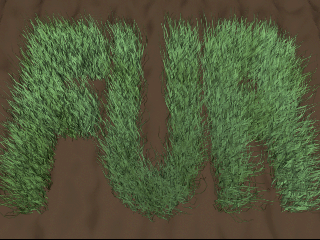
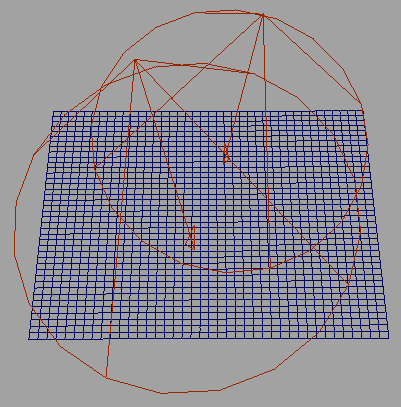
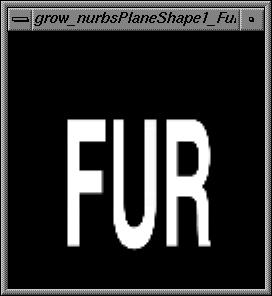
 at the bottom-right corner of the Maya main window and move to the first frame.
at the bottom-right corner of the Maya main window and move to the first frame.
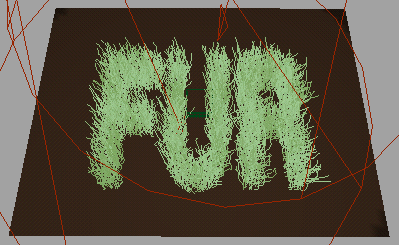
 button to check that the attributes are behaving the way you want them to.
button to check that the attributes are behaving the way you want them to.
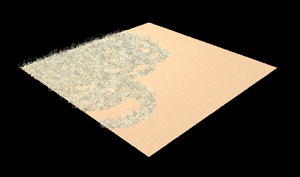
 button to check that the attributes are behaving the way you want them to.
button to check that the attributes are behaving the way you want them to.